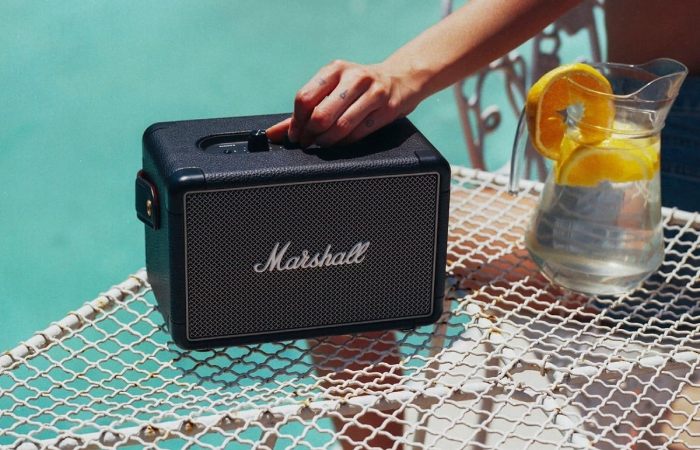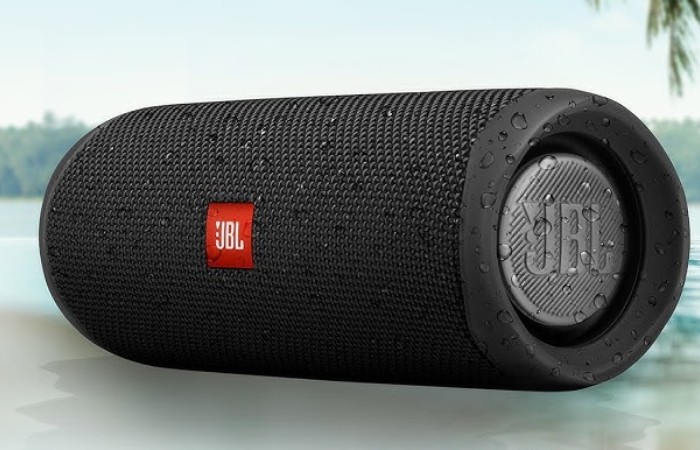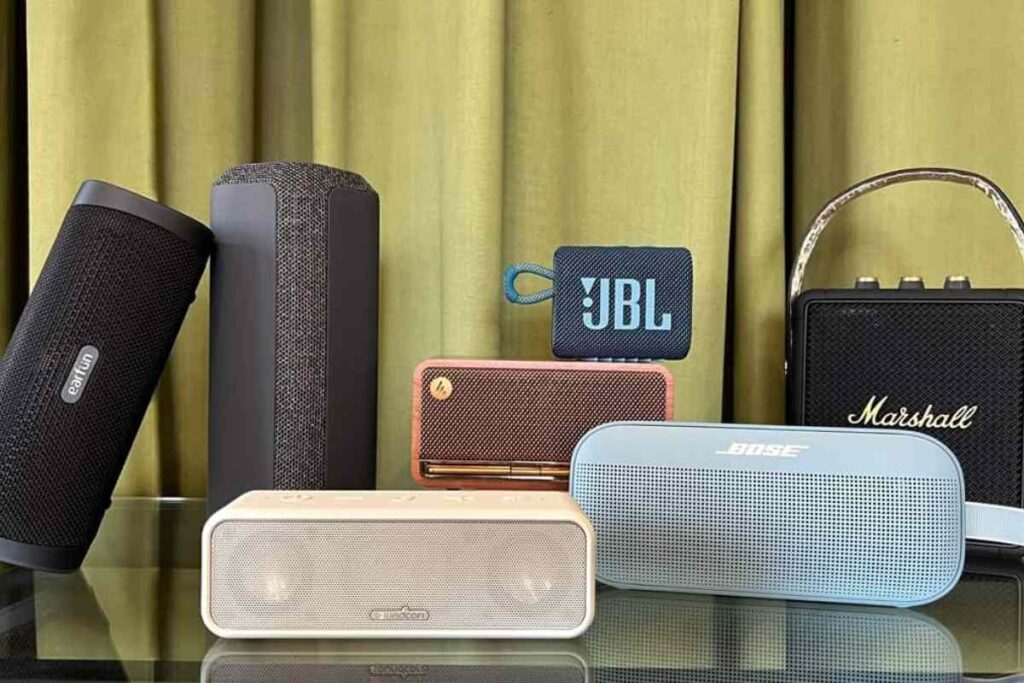Bluetooth speakers is by far the utmost invention of the century. It is changing our electronics market and shaping a new wireless world. Therefore, buying a Bluetooth speaker that provides clear sound is a must.
You can connect these wireless speakers with your handset or iPod and take them anywhere. But it is not always that simple. You need to choose the right sound quality and the perfect design. That is why we are looking for the best Bluetooth speakers of this year and reviewing them.
- Marshall Kilburn II Portable Bluetooth Speaker
- Marshall Emberton II Compact Portable Bluetooth Speaker
- Marshall Willen Portable Bluetooth Speaker
- JBL Flip 5 Wireless Portable Bluetooth Speaker
- Sony SRS-XB100 Wireless Bluetooth Portable Lightweight Super-Compact Travel Speaker
- Tribit 2024 Version XSound Go Wireless Bluetooth 5.3 Speakers with Loud Stereo Sound & Rich Bass
- JBL Go 3, Wireless Ultra Portable Bluetooth Speaker
- Portronics SoundDrum P 20W Portable Bluetooth Speaker
- ZEBRONICS ZEB-SOUND FEAST 500 Bluetooth 5.0 portable speaker
- ZEBRONICS Sound Feast 400 Bluetooth v5.0 Portable Speaker
Style and Design (Bluetooth Speakers)

Bluetooth speakers are available in several varieties. The most common design is the rectangular sound bar. Newer speakers have a cylindrical shape and are rounded throughout. However, the most recent developments are fabric-covered speakers.
In general, the design should be practical and not just unique. It should help disperse the sound throughout the room. Spherical and bowl-shaped speakers are best suited for this purpose.
Bluetooth Version
When purchasing a Bluetooth speaker, it is crucial to understand the different versions of Bluetooth. Bluetooth 1.0 was the first form of Bluetooth and is now quite outdated. Later versions of Bluetooth increased the data transfer speed. However, this has affected many things, such as compatibility with wearables and headphones.
Bluetooth 4.0 and 5.0 are the latest innovations. They can interact with various devices and send data over longer distances. Bluetooth 4.0 is the right choice due to its high data transfer speed, but does not support wireless headphones.
Bluetooth 5.0, however, can send low-power data up to 240 meters. It supports small sensors and is ideal for connecting to your wireless headphones. It is also rearward compatible with older versions of Bluetooth.
Frequency Response

Frequency reply refers to the range of frequencies speakers can detect and transmit. Typically, people can hear everything from 20 Hz to 20,000 Hz. So, your headphones should be able to reproduce this.
A typical frequency reply graph shows the volume or intensity at which speakers output each occurrence. An ideal graph would be a straight line, with each frequency sent and received at the same volume or intensity.
If you regularly listen to bass-heavy music, such as rock and metal, consider a speaker that boosts the bass frequencies. The graph will look like a curve going from high to low.
Drivers (Bluetooth Speakers)
Drivers are what produce the sound from your speaker. Large home theatre-style speakers use up to three drivers: one for highs, one for lows, and one for mids. So you may find other configurations as well.
However, due to space constraints, a typical Bluetooth speaker usually uses a single full-range speaker. You may also find a dual-speaker speaker that sounds louder and clearer. Likewise, some speakers may use a vibration-generating device instead of a separate subwoofer.
If drivers determine audio output, it’s no surprise that more prominent speakers sound louder. The 40mm driver is the most common in Bluetooth speakers. However, you can use more. Just remember that more prominent speakers will mean a bigger speaker.
Audio Quality
Sound quality is a general term that encompasses several characteristics. These include total harmonic distortion and frequency response.
Total harmonic misrepresentation is the internal noise of the speaker. Ideally, it should be within 1%. Other factors, such as motorized and environmental noise, can interfere with listening.
Connectivity
This may seem ironic since Bluetooth speakers are supposed to only connect to Bluetooth. However, in addition to evaluating the Bluetooth version, having some wired connectivity is a good idea.
Find the essential AUX input. This is what people primarily use to play their tunes from the speaker. Some speakers may also have NFC. Few people use it, but it allows quick pairing between your device and the speaker. Your device should also be NFC-enabled.
This brings us to another point: if you’re connecting to a device that doesn’t have Bluetooth, you should use wired inputs. This is the main reason why you should consider a wired connection. But there are other reasons, such as saving battery power and reducing interruptions.
Water-Resistance (Bluetooth Speakers)
Many people like to listen to music by the pool or in the shower. That’s why a waterproof Bluetooth speaker is always a good idea. But don’t worry; you should look at the IP score and then check the IP rating table.
The first digit of the IP ranking indicates protection against particle ingress. For Bluetooth speakers, this will mean dust and dirt. The second digit indicates protection against water or liquid penetration. For example, an IP54 rating means the speaker is dust-resistant and can withstand light splashes.
A dust penetration rating of 5 or higher and a water penetration rating of 4 or higher are sufficient for most applications. For pool use, consider a water penetration rating of 7 or higher. A rating of 7 means the speaker can be flooded in water up to one meter deep.
Battery Life
Finally, consider battery life. This is an essential factor when purchasing any wireless device, speaker or not. Most Bluetooth orators can last up to 24 hours on a complete charge. However, some cheaper quality models won’t even last for an hour. You’re unlikely to use the speaker continuously for more than 4 hours. So, you may also want to settle for a smaller battery.
Charging time is also an important purchasing factor. The larger the battery, the longer it will last, and the more often you’ll need to charge it.
Conclusion
Buying a decent Bluetooth speaker is not an easy decision. Firstly, there are so many fake and unreliable brands on the internet. And secondly, you never know what kind of sound quality you will get.
However, once you get your hands on a good Bluetooth speaker, don’t let it go. This year’s best Bluetooth speakers are defined by their ideal frequency response and long-lasting battery life. A decent IP rating is also a good idea, as is a dual-driver speaker.
No matter what you choose, make sure you find the right sound for you.

